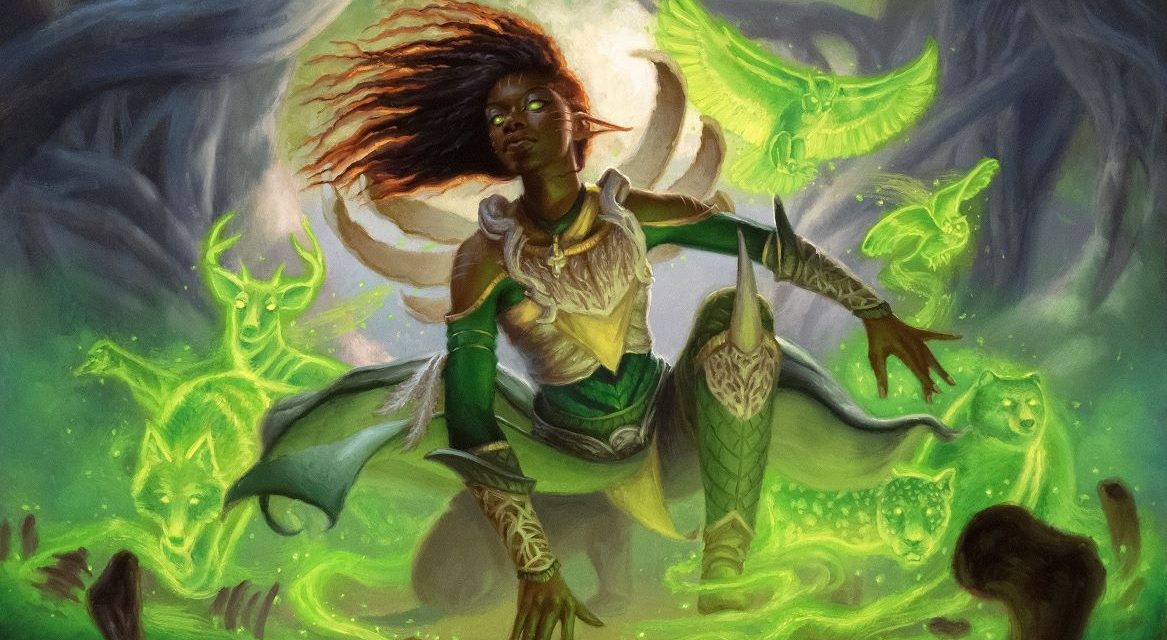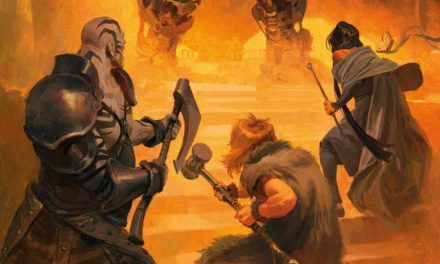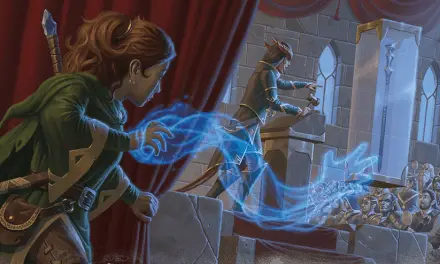The Circle of the Shepherd Druid knows this: there is safety in numbers.
For Druids who like to focus on summoning and buffing their allies, the Circle of the Shepherd is the clear pick.
These adventurers dedicate themselves to protecting those who cannot protect themselves. In return, they will never find themselves without company despite their distaste for life in cities and towns.
So gather up with the rest of the pack as we explore everything this subclass has to offer.
This is the full subclass guide to the Circle of the Shepherd Druid in D&D 5e!
What is the Circle of the Shepherd Druid?
As with most Druids, the Circle of the Shepherd is closely tied to the various beasts and fey creatures found in nature.
Shepherd Druids view protecting these creatures as their solemn duty.
In fact, this responsibility may very well be what spurs a Circle of the Shepherd Druid to adventure in the first place! After all, it is important to know the world beyond their home if they want to protect it!
As the Circle of the Shepherd Druid ventures into the world, they bring their loyal animal/fey spirits with them.
With the ability to summon and strengthen the spirits of nature that they protect, these Druids never walk alone.
The Circle of the Shepherd Druid appears in Xanathar’s Guide to Everything alongside the Circle of Dreams Druid.
Role in the Party
Above all else, the Circle of the Shepherd Druid is a summoner.
This means that the Druid will want to position themselves safely in the backline. From there, they are able to offer support to their allies (both summoned and otherwise) in combat.
Meanwhile, the creatures that the Druid summons with spells like Conjure Animals or Conjure Woodland Beings can stand on the front line.
Because the Circle of the Shepherd Druid’s features are so focused on buffing their allies, they aren’t likely to use many of the Druid class’s AoE control spells like Entangle which also require concentration.
Staying in the backline to maintain concentration on their summons and offer healing is where the Circle of the Shepherd shines most!
But don’t underestimate the healing capabilities of this subclass either. The Unicorn Spirit option these Druids get with their Spirit Totem feature easily puts the Shepherd Druid among the best healers in the entire game!

Circle of the Shepherd Druid Abilities
The Circle of the Shepherd Druid’s features are hyper-focused on buffing their allies and keeping everyone in tip-top shape.
To get the most value out of most of this subclass’s features, you will want to pay extra close attention to positioning in combat. Where you and your allies (summoned or otherwise) are standing is vital to getting the most use out of your Spirit Totem.
As you gain levels in the Circle of the Shepherd, your ability to buff your allies will continue to get better and better.
If you take care of those around you, they will also take care of you.
Recommended: The Ultimate Guide to Wild Shape in D&D 5e!
Speech of the Woods (Level 2)
When taking the Circle of the Shepherd at 2nd level, you gain the Speech of the Woods ability.
After all, being able to communicate with each other is an important part of making new friends!
You learn to speak, read, and write Sylvan.
In addition, beasts can understand your speech, and you gain the ability to decipher their noises and motions.
Most beasts lack the intelligence to convey or understand sophisticated concepts, but a friendly beast could relay what it has seen or heard in the recent past.
This ability doesn’t grand you friendship with beasts, though you can combine this ability with gifts to curry favor with them as you would with any nonplayer character.
This gives some fun flavor and can lead to some interesting roleplaying moments.
In situations where you can potentially learn information by becoming friends with an animal or Fey, it can prove helpful.
It also allows you to strategize and communicate with the spirits that you summon. This is particularly helpful for things like scouting, especially in situations where animals (like birds or rats) would have an easier time than, say, a Rogue.
Additionally, beasts understand you and you can better understand their behavior/mannerisms. It’s kind of like an always-on version of the Speak with Animals spell.
Though it’s worth noting that this doesn’t mean that the animals will always be friendly. However, a bit of food can go a long way in making a new friend!
Spirit Totem (Level 2)
The other ability that the Circle of Shepherd Druid gets right out of the gate is Spirit Totem.
This is the key feature for this subclass and can have a simply astounding level of impact. Even beyond how versatile it is, it also plays very well with your action economy and encourages the party to play relatively close together.
As a bonus action, you can magically summon an incorporeal spirit to a point you can see within 60 feet of you.
The spirit creates an aura in a 30-foot radius around that point. It counts as neither a creature nor an object, though it has the spectral appearance of the creature it represents.
As a bonus action, you can move the spirit up to 60 feet to a point you can see.
The spirit persists for 1 minute or until you’re incapacitated. Once you use this feature, you can’t use it again until you finish a short or long rest.
The Spirit Totem is how you provide some awesome buffs to yourself and any allies within the Totem’s 30-foot radius.
The exact nature of the buffs depends on whether you summon a Bear, Hawk, or Unicorn Spirit with this ability. (We’ll cover each of those options next.)
Note that, while your Spirit Totems are incredibly powerful, you will want to use this feature wisely. You only get 1 per short or long rest, so keep that in mind!
Bear Spirit
When you summon the Bear Spirit with the Circle of the Shepherd’s Spirit Totem, you give your allies the strength and endurance of the bear.
Each creature of your choice in the aura when the spirit appears gains temporary hit points equal to 5 + your Druid level.
In addition, you and your allies gain advantage on Strength checks and Strength saving throws while in the aura.
This is a great option for when your party needs some extra defense.
Being able to give temporary hit points to all of your allies and summons is incredible. This is also an important detail to keep in mind: this isn’t just limited to your party members.
If you summon a pack of wolves, you can throw down your Bear Spirit totem and give them all a nice chunk of temporary hit points to keep them in the fight even longer!
The early levels tend to be the most dangerous, so this has an immediate and noticeable impact on your party’s performance and survivability!
Being able to drop this Spirit Totem right out of the gate at level 2 is a major draw to the Circle of the Shepherd!
Related: Temporary Hit Points in D&D 5e Explained!
Hawk Spirit
So we’ve covered the defensive option, but what about if you want to go on the offensive instead?
Well, you’re in luck!
Choosing to summon the Hawk Spirit with your Spirit Totem grants your allies the predatory instincts of the hawk.
When a creature makes an attack roll against a target in the spirit’s aura, you can use your reaction to grant advantage on that attack roll.
In addition, you and your allies have advantage on Wisdom (Perception) checks while in the aura.
Being able to give advantage on attacks is incredibly powerful. With this, you can set your heavy hitters up to potentially deal a boatload of damage (like a Paladin’s Divine Smite or Rogue’s Sneak Attack).
Since you’re likely towards the back of the party, this is a great use of your reaction (which you likely won’t be using much of anyway.)
Just be aware that, because this uses your reaction, you can only use this feature for one attack per round. However, this can still have a huge impact if you choose who you give this benefit to wisely.
If you’re fighting an enemy with a high Armor Class or if they may try to escape, giving your heavy hitter advantage can be a make-or-break decision!
Of the three options, this will almost certainly be the one that you use the most.
However, that doesn’t mean that you should ignore the other two options. Each spirit has a specific function and you want to be comfortable using each of them when they’ll be the most helpful!
Unicorn Spirit
The Unicorn Spirit is the healing option for your Spirit Totem.
And oh boy does this thing crank out some healing!
You and your allies gain advantage on all ability checks made to detect creatures in the spirit’s aura.
In addition, if you cast a spell using a spell slot that restores hit points to any creature inside or outside the aura, each creature of your choice in the aura also regains hit points equal to your Druid level.
Don’t forget that this option also gives you and your allies advantage on ability checks made to detect creatures in the spirit’s aura. For particularly tricky enemies, this can greatly skew the fight in your favor.
But where the Unicorn Spirit Totem really shines is with the bonuses that it gives to your healing abilities.
Depending on how many allies you have in the Spirit Totem’s aura (which is likely all or most of them), this can result in an insane amount of extra healing on the battlefield.
It’s also worth noting that the target of your healing spell to trigger this effect does not have to be in the Spirit Totem’s aura!
With the right positioning, you’ll be able to get a ton of extra value from your healing spells using the Unicorn Spirit!
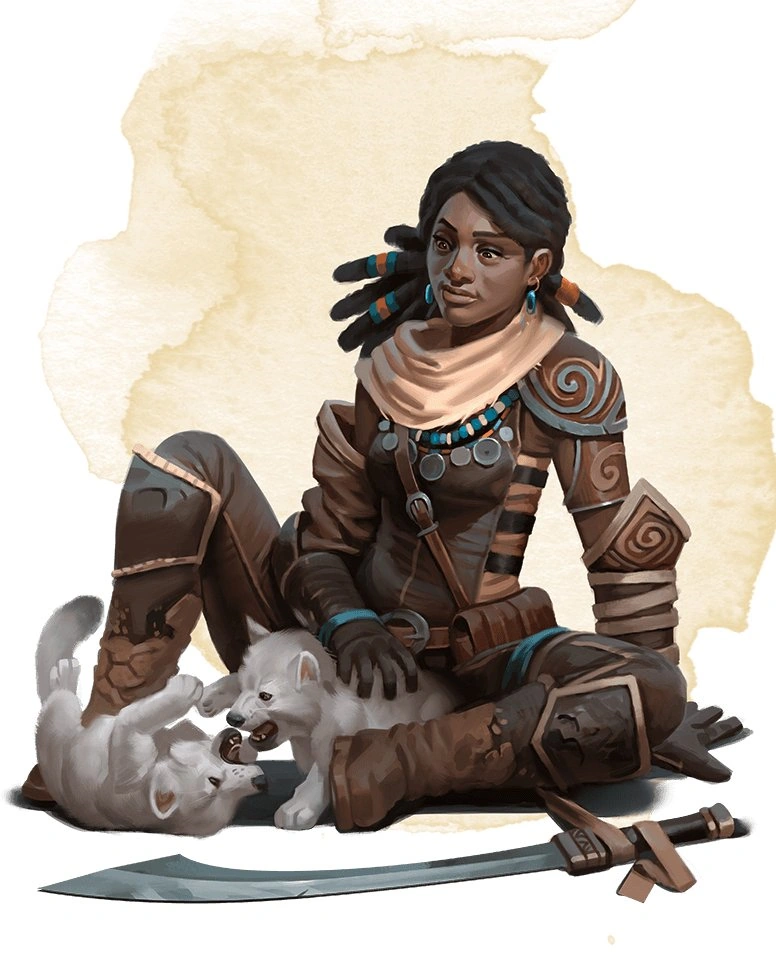
Mighty Summoner (Level 6)
The Mighty Summoner ability is an all-around buff to the effectiveness of your summons.
Not only will this make your summoned allies tougher, but it also addresses one of the biggest problems that most summoned creatures inevitably face.
Any beast or fey summoned or created by a spell that you cast gains the following benefits:
Each of these creatures gains 2 extra hit points per Hit Die that they have.
Additionally, your summon creatures’ attacks count as magical when overcoming immunity and resistance.
The extra hit points are nice and will definitely be useful.
But summoned creatures are constantly left helpless when it comes to dealing with enemies that resist or are immune to nonmagical damage. Thankfully, those days are now long gone!
There’s not a lot to elaborate on here, but it’s a very solid buff considering that it affects all of your summoned allies going forward.
Guardian Spirit (Level 10)
At level 10, your summoned creatures benefit from your Circle of the Shepherd Druid’s Guardian Spirit feature.
When a beast or fey that you summoned or created with a spell ends its turn in your Spirit Totem aura, that creature regains a number of hit points equal to half your Druid level.
It’s difficult to overstate the impact that this has on keeping your summoned creatures on the field.
Particularly if this is used alongside the Circle of the Shepherd Druid’s Unicorn Spirit Totem, it can be seemingly impossible to drop your summoned creatures.
The biggest weakness at this level, however, is that most of the creatures that you will be able to summon are starting to become noticeably weaker than most enemies that you are facing.
You can summon a ton of them (twice as many when using Conjure Animals as a 5th level spell), but there is only so much strength in numbers.
Now, don’t get me wrong! Your horde can still certainly contribute to your party’s damage output!
But at level 10 they start to become more valuable as extra hit points between your party and the enemies you’re fighting.
With that said, being able to have them continually recovering hit points throughout the fight helps them stay useful as they naturally start to take on a new role as “meat shields” in combat.
Also Check Out: The Best Druid Spells By Level in D&D 5e!
Faithful Summons (Level 14)
So what if the worst happens and an enemy breaks through your wall of summons and knocks you unconscious?
That’s where your Circle of the Shepherd Druid’s level 14 capstone feature, Faithful Summons, comes into play!
If you are reduced to 0 hit points or are incapacitated against your will, you can immediately gain the benefits of the Conjure Animals spell as if it were cast using a level 9 spell slot.
It summons four beasts of your choice that are challenge rating 2 or lower. The conjured beasts appear within 20 feet of you.
If they receive no commands from you, they protect you from harm and attack your foes.
The spell lasts for 1 hour, requiring no concentration, or until you dismiss it (no action required.)
With any luck, this is an ability that you won’t get to show off very much. But it’s certainly very nice to have!
While the creatures can’t get you back on your feet, they can make it far easier for your party members to help you out.
This casting of Conjure Animals lasts for 1 hour as normal, but it is special in that it doesn’t require concentration. If you are so inclined, you can summon even more allies once you’re back on your feet!
This feature can only be used once between long rests. However, if you’re getting dropped in combat that often then there may be other problems!
As for which beasts you should choose for this, I’m partial to Polar Bears. They’re hardy and can still put out some decent enough damage to deter certain enemies.
However, Giant Constrictor Snakes have the added perk of being able to grapple and restrain enemies. That makes these a good option as well unless you’re fighting enemies with high Strength saves that will easily beat the escape DC.
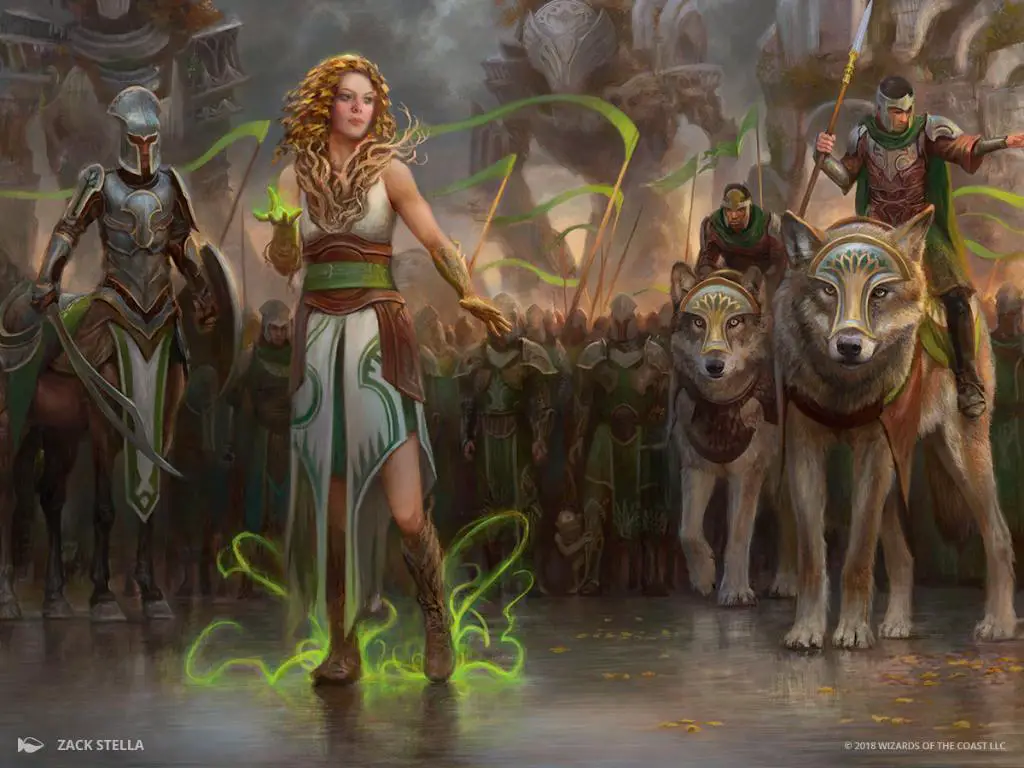
Connections
It may take a little bit of finesse to work the Circle of Shepherd Druid into the party.
Most (though not necessarily all) of these Druids tend to live far away from cities and other settlements. They greatly prefer the company of animals and Fey beings to other people.
You will definitely want to work with your DM to develop a reason why a Druid from the typically reclusive Circle of the Shepherd would be adventuring with the party.
The Circle of the Shepherd Druid is ultimately concerned about protecting those under their care.
They may set off on their adventure with the goal of protecting their furry friends back home, but perhaps they begin to view the party as charges as well.
As they get to know each other more, the Circle of the Shepherd may view it as a sacred duty to protect their new friends at any cost.
Is the Circle of the Shepherd Druid Good?
I am admittedly of two minds when it comes to the Circle of the Shepherd Druid.
On one hand, this class doesn’t really start to pop off until they start getting spells that summon creatures.
Conjure Animals was the go-to for a long time (and is still largely the bread-and-butter spell for this subclass), but you couldn’t cast it until you hit 5th level.
However, thanks to Tasha’s Cauldron of Everything, you can now take the Summon Beast spell upon reaching level 3. This helps you to start getting more value out of your Spirit Totem ability slightly earlier.
But once the Circle of the Shepherd Druid starts popping off, it’s ridiculously strong until the much later levels. Sending a pack of totem-buffed wolves (with pack tactics) to tear enemies apart can make most “level-appropriate” combats a joke.
Ultimately, however, this subclass’s biggest strength also becomes a certain limitation for it.
A huge amount of Druid spells require concentration. That means you won’t be able to use them while you’re also concentrating on the spells that you use to summon your allies.
At least not if you want to keep your summoned allies on the field which, you know… you do.
If you’re wanting to really explore the Druid spell list, you probably won’t get as much opportunity to do so with the Circle of the Shepherd. With this subclass, you’ll be focusing on your summoning spells as well as some reliable cantrips or non-concentration spells.
But that doesn’t take away from how impactful this subclass is. It’s definitely a powerful option!
Related: Ranking Every Druid Subclass in D&D 5e!
A Quick Rant…
However, I need to include a brief rant/disclosure here.
Having been the DM in a party with a Circle of the Shepherd Druid, I admittedly find myself with a bit of lingering frustration at this class.
As with any summoner-type character, combat will either be made hilariously short or painfully long and drawn out.
It can take some time to find a balance in building encounters that will be engaging for all of the players while still letting the Circle of the Shepherd Druid show off their abilities.
So, yes, I would ultimately have to say that the Circle of the Shepherd Druid is good.
However, this comes with the caveat that the Shepherd Druid player takes an active interest in working with their DM to keep the game fun for everybody. Otherwise, this class has a major risk of causing burnout in the group.
If you are playing a Circle of the Shepherd Druid, please make it a point to know what you are doing on your turn in advance. (Though that’s just also generally good to do regardless of what character you’re playing.)
If you don’t do this, the action in combat can quickly come to a screeching halt and the other players will likely start to get frustrated or distracted.
At least in my experience, that was the source of some frustration at our table that we had to iron out. With clear communication, it can work and keep the game moving and fun, but that communication has to be there.
Conclusion – Circle of the Shepherd Druid in D&D 5e
This is one of the most interesting Druid subclasses, in my opinion. It requires a very responsible personality on both the part of the character and the player to work right.
For those who choose to take on this responsibility, they will never find themselves lacking allies!
And speaking of having friends to help you out…
Don’t forget to check out our Complete Druid Guide for D&D 5e! It covers everything you need to fully channel the power of nature on your adventures!

